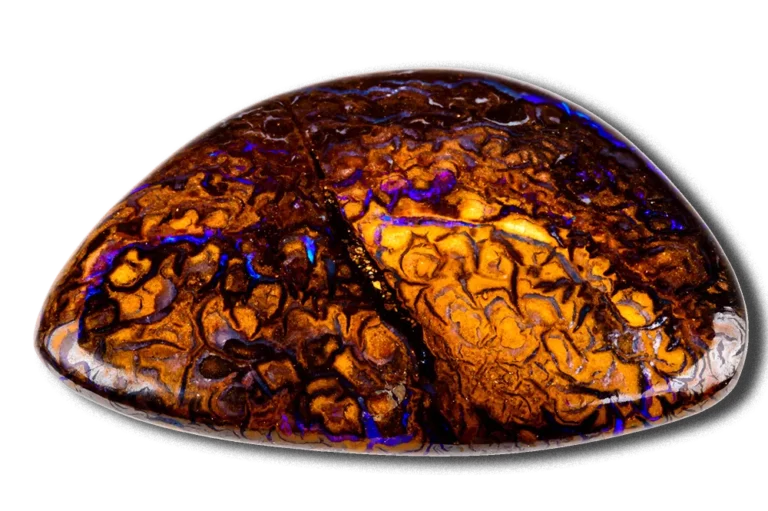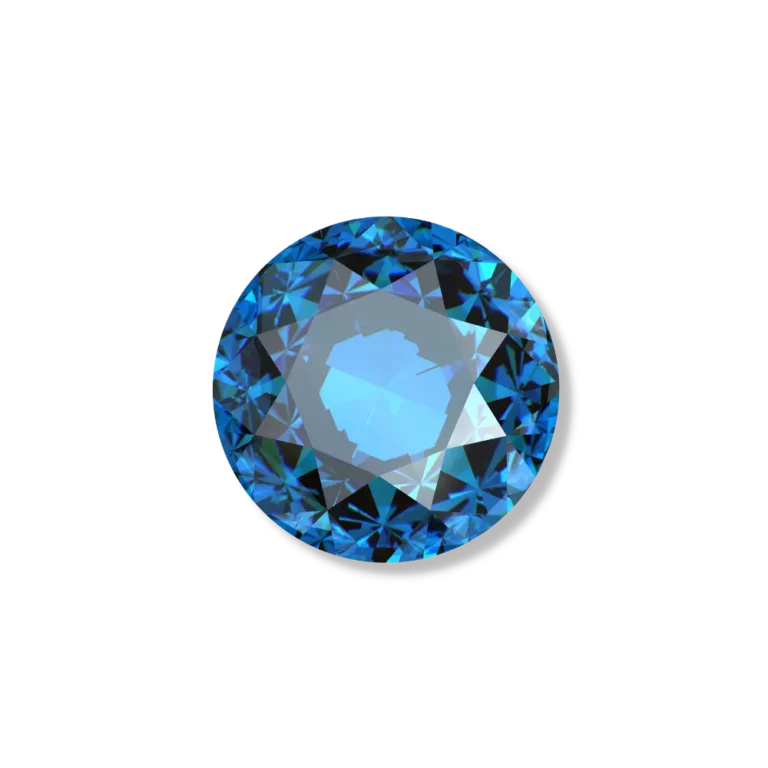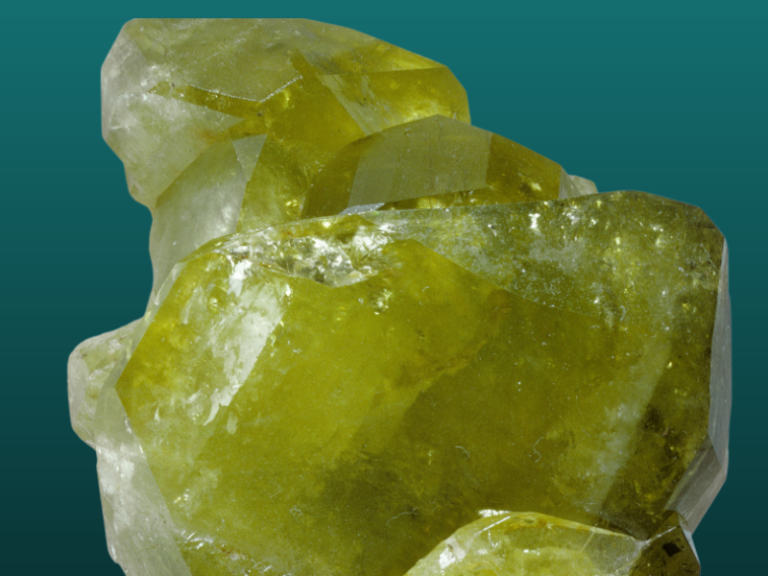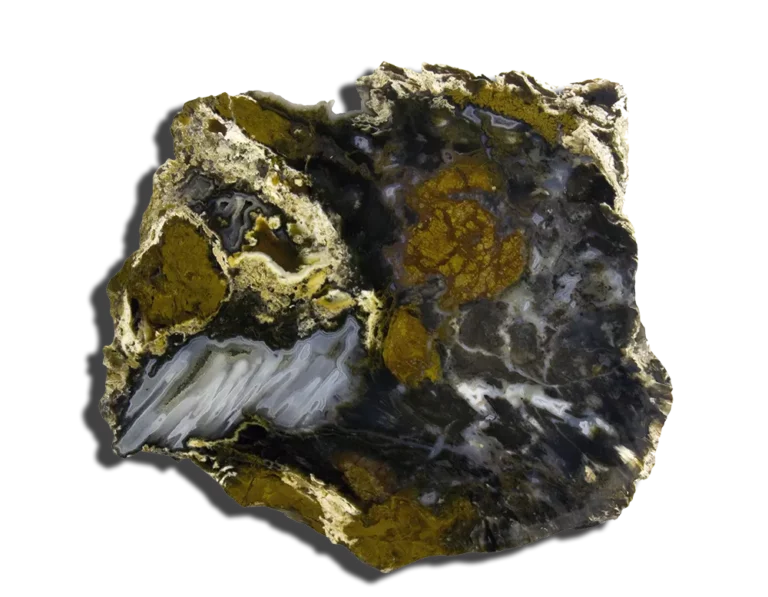Selenite Gemstone: Properties, Benefits & Meanings

Selenite Overview
Selenite Gemstone is a beautiful gem that belongs to the gypsum mineral family and possesses distinct physical and metaphysical properties. Selenite commonly exhibit a translucent or transparent appearance, with colors ranging from colorless to white and occasionally pale shades of yellow, orange, or brown.
Formed through the precipitation of calcium sulfate-rich solutions in evaporative environments like hot springs, clay beds, and caves, selenite crystals have a monoclinic crystal structure. This structure gives rise to their elongated and striated formations. In addition, Selenite’s vitreous or pearly luster adds to its aesthetic appeal.
Beyond its visual allure, selenite is renowned for its healing and metaphysical properties. It is believed to possess energy-cleansing abilities, effectively purifying individuals, spaces, and other gemstones from negative energy. This blog post will discuss the properties, benefits, and meanings of Selenite Gemstone. By understanding these aspects, you can better appreciate the beauty and value of this precious gem.
What Is Selenite Gemstone?
Selenite Gemstone is a mesmerizing gem known for its translucent or transparent appearance. It belongs to the gypsum mineral family and is primarily composed of calcium sulfate dihydrate (CaSO4·2H2O). They commonly exhibit colorless or white hues but can also appear in pale yellow, orange, or brown shades. Its delicate nature and unique physical properties, such as its striated crystal formations and vitreous or pearly luster, contribute to its aesthetic appeal.
Selenite is a captivating and versatile mineral valued for its ethereal beauty and metaphysical properties. Its translucent nature, energy-cleansing abilities, and spiritual associations make it a sought-after gemstone in various practices and applications.
How is Selenite Gemstone Formed?
Selenite gemstones are formed through a process of precipitation in evaporative environments. It begins with a source material of calcium sulfate, specifically calcium sulfate dihydrate (CaSO4·2H2O). These minerals are commonly found in sedimentary environments. In evaporative environments such as hot springs, clay beds, or caves, water containing dissolved calcium sulfate comes into contact with air or changes in temperature or pressure.
As the water evaporates, it leaves behind concentrated solutions of calcium sulfate. Within these concentrated solutions, the calcium sulfate molecules start to bond together and form crystalline structures. Over time, these crystals grow larger and develop into the selenite we recognize. The resulting gemstones can exhibit various shapes and sizes, often characterized by elongated and striated formations. In addition, impurities or trace elements present during the formation process can influence the coloration of selenite, resulting in shades of color like yellow, orange, or brown.
The formation of selenite Mineral is a slow and intricate process that occurs over an extended period in specific geologic settings, resulting in the unique beauty and properties associated with Selenite.
Physical Properties
| Mineral Group | Gypsum |
| Formula | CaSO4·2H2O |
| Chemical Name: | Calcium Sulfate Dihydrate |
| Color | Colorless or white, light blue, gray, or yellow |
| Hardness (Mohs scale) | 2 |
| Refractive Index | 1.520 to 1.530 |
| Fracture | Micaceous |
| Luster | Vitreous |
| Specific Gravity | 2.30 to 2.33 |
| Transparency | Transparent to Translucent |
Etymology
The term “selenite” is derived from the Greek word “selēnē,” which means “moon.” The name refers to the moon-like glow and luminosity often seen in selenite gemstones. The association with the moon is due to its pearly white color and the belief that they exhibit the ethereal qualities reminiscent of moonlight.
The Greek word “selēnē” itself is derived from the name of the Greek Goddess of the moon, Selene, in Greek mythology. Selene was often depicted as a radiant goddess who rode her silver chariot across the night sky, illuminating the world with her gentle glow. Selenite gemstones’ luminescence and divine qualities evoke a similar sense of magic and mystique, leading to associating with the moon and using the term “selenite” or “moonstone” to describe these gemstones.
The name ‘selenite’ is mostly synonymous with gypsum but has been used historically to describe the transparent variety, as opposed to satin spar gypsum for the fibrous variety and alabaster for the massive fine-grained form.
Where is Selenite Gemstone Found?
Here is a list of countries where Selenite Gemstone is found:
- United States
- Mexico
- Brazil
- Australia
- Morocco
- Canada

Selenite Gemstone Appearance
Selenite gemstones are renowned for their stunning and unique appearance. They typically exhibit a translucent or transparent quality, allowing light to pass through them and creating a captivating glow. In addition, the gemstones often appear colorless or white, resembling pure crystalline ice or freshly fallen snow. This colorlessness lends them a versatile and timeless appeal.
In addition to their colorless or white base, selenite can occasionally display pale yellow, orange, or brown shades. These subtle hues may be present due to trace impurities or environmental factors during their formation. However, the primary characteristic of selenite remains their clarity and light-transmitting quality.
Selenite stone can take various forms when cut and polished. Their natural crystal formations are often elongated and striated, giving them an elegant and distinct appearance. These elongated crystals can sometimes resemble delicate columns or wands, adding to their allure.
The surface of selenite gem has a smooth and sometimes slightly waxy texture. They can also exhibit a subtle vitreous (glass-like) or pearly luster, enhancing their visual appeal. Their translucent nature, unique crystal structures, and radiant glow contribute to selenite stones’ ethereal beauty and enchantment.
Types of Selenite Gemstone
Different types of selenite gemstones can be identified based on their appearance and specific characteristics. Here are some of the notable types:
Clear: This type of selenite gemstone is transparent and colorless, often resembling a pristine crystal or a piece of ice. Clear Selenite Gemstone is highly valued for its pure and radiant appearance, allowing light to pass through it with exceptional clarity.
White: White selenite gemstones are translucent or slightly opaque with a milky-white coloration. They are soft and ethereal, often resembling a cloudy or frosted crystal. White Selenite Gemstone is commonly sought after for its soothing and calming energy. They can be found in the Naica Mines of the Mexico Region.
Peach: Peach selenite gemstones exhibit delicate pale orange or peach hues. These gemstones have a gentle and warm glow reminiscent of a sunset or the softness of a peach-colored sky. Peach Selenite Gemstone is often associated with warmth, creativity, and emotional healing.
Golden: Golden selenite gemstones display a range of yellow to golden hues. The coloration can vary from pale yellow to deeper golden tones, resembling the warm glow of sunlight. Golden Selenite Gemstone is associated with positive energy, abundance, and spiritual illumination.
Desert Rose: Desert Rose Selenite is a unique selenite gemstone with a rosette-like crystal formation. It typically appears as clusters of flat, bladed crystals that resemble rose petals or sand dollars. Desert Rose Selenite Gemstone is often found in desert environments. It can exhibit a range of colors, including white, beige, and brown.
Fishtail: Fishtail selenite gemstones are characterized by their distinctive crystal formation, resembling a fish’s tail or a fan. The crystals are often thin and delicate, forming interlocking layers that create a fan-like shape. Fishtail selenite gemstone can have a translucent to opaque appearance and is valued for its unique and intricate structure.

Selenite Gemstone Value and Price
The value and price of selenite gemstones can vary based on several factors, including carat weight, cut, clarity, and color. However, it’s important to note that the gem is generally more valued for its metaphysical properties and aesthetic appeal than its rarity or high monetary value. Here’s an overview of how these factors can influence the value and price of selenite gemstones:
Carat Weight: Selenite stones are typically available in various carat weights, from small specimens to larger pieces. Larger stones may command a higher price due to their size and visual impact. However, the overall carat weight is not usually the primary determinant of value.
Cut: Selenite gemstones can be shaped and cut into various forms, including cabochons and faceted gemstones. The quality of the cut, including the precision, symmetry, and polish, can affect the value. Well-cut selenite gemstones with excellent craftsmanship and a pleasing shape may be priced higher due to the skill and effort involved in the cutting process.
Clarity: Selenite gemstones are known for their transparency or translucency but may contain natural inclusions or imperfections. While some collectors appreciate unique inclusions that add character to the gemstone, gemstones with higher clarity and fewer visible flaws are generally more valuable.
Color: Selenite gemstones are commonly colorless or white, but they can also exhibit pale shades of yellow, orange, or brown due to impurities or environmental factors. The color of selenite gemstones does not significantly affect their value, as the emphasis is more on their clarity, luminosity, and overall appearance.
It’s important to note that the price of selenite gemstones can also be influenced by market demand, the seller’s reputation, and the specimen’s uniqueness. However, compared to other gemstones, this stone is generally considered more accessible and affordable.
How Can You Tell if Selenite Gemstone Is Real?
Determining whether a selenite gemstone is real or fake can be challenging, as several factors must be considered. Here are some guidelines to help you identify genuine Selenite:
Visual Examination: Real selenite gemstones should exhibit a translucent or transparent appearance. They typically have a glassy or pearly luster. If a specimen appears opaque, dull or has a plastic-like sheen, it may indicate that it is not genuine Selenite.
Physical Properties: Selenite Gemstone has a relatively low hardness on the Mohs scale, typically around 2 Mohs, which can be easily scratched with a fingernail or a copper coin. Therefore, if a specimen is excessively hard or does not show signs of scratching, it may not be genuine Selenite.
Solubility: Selenite Gemstone is a soluble mineral that dissolves in water. To test the authenticity of a selenite specimen, you can place a small piece in water and observe if it begins to dissolve or disintegrate. However, be cautious with this test, as prolonged exposure to water can damage genuine Selenite.
Weight: Genuine selenite gemstones are relatively lightweight compared to other minerals. If a specimen feels excessively heavy or denser than expected, it could indicate it is not a real Selenite Gemstone.
What Does Selenite Gemstone Symbolize?
Selenite gemstones are associated with various symbolic meanings and metaphysical properties. Here are some of the symbolic representations commonly attributed to the gem:
Clarity and Purification: Selenite Gemstone is often seen as a symbol of clarity and purification. It is believed to have cleansing energy that helps clear negativity in physical and energetic realms. Selenite is thought to cleanse and purify the mind, body, and spirit, promoting mental clarity and a sense of inner peace.
Spiritual Connection: Selenite Gemstone is associated with spirituality and higher consciousness. It is believed to enhance intuition, psychic abilities, and spiritual growth. Selenite is often used in spiritual practices, meditation, and energy work to facilitate connection with higher realms, angelic energies, and spirit guides.
Light and Illumination: Selenite Gemstone is known for its radiant and luminous appearance. It is seen as a symbol of light and illumination, literally and metaphorically. Selenite is believed to bring light into dark or stagnant areas of one’s life, promoting a sense of positivity, inspiration, and upliftment.
Peace and Serenity: Selenite Gemstone is associated with tranquility, peace, and serenity. Its calming energy is said to help soothe the mind, release stress, and promote a sense of inner harmony. Therefore, Selenite is often used in meditation and healing to create a peaceful and serene environment.
Angelic Connection: Selenite Gemstone is often associated with angelic energies and is believed to facilitate communication and connection with the angelic realm. It is seen as a symbol of angelic guidance, protection, and support.
Crown Chakra Activation: Selenite Gemstone is commonly linked to the crown or third eye chakra, the energy center at the top of the head associated with spiritual connection and higher consciousness. Selenite is believed to help open and activate the crown chakra, allowing for expanded awareness and spiritual experiences.
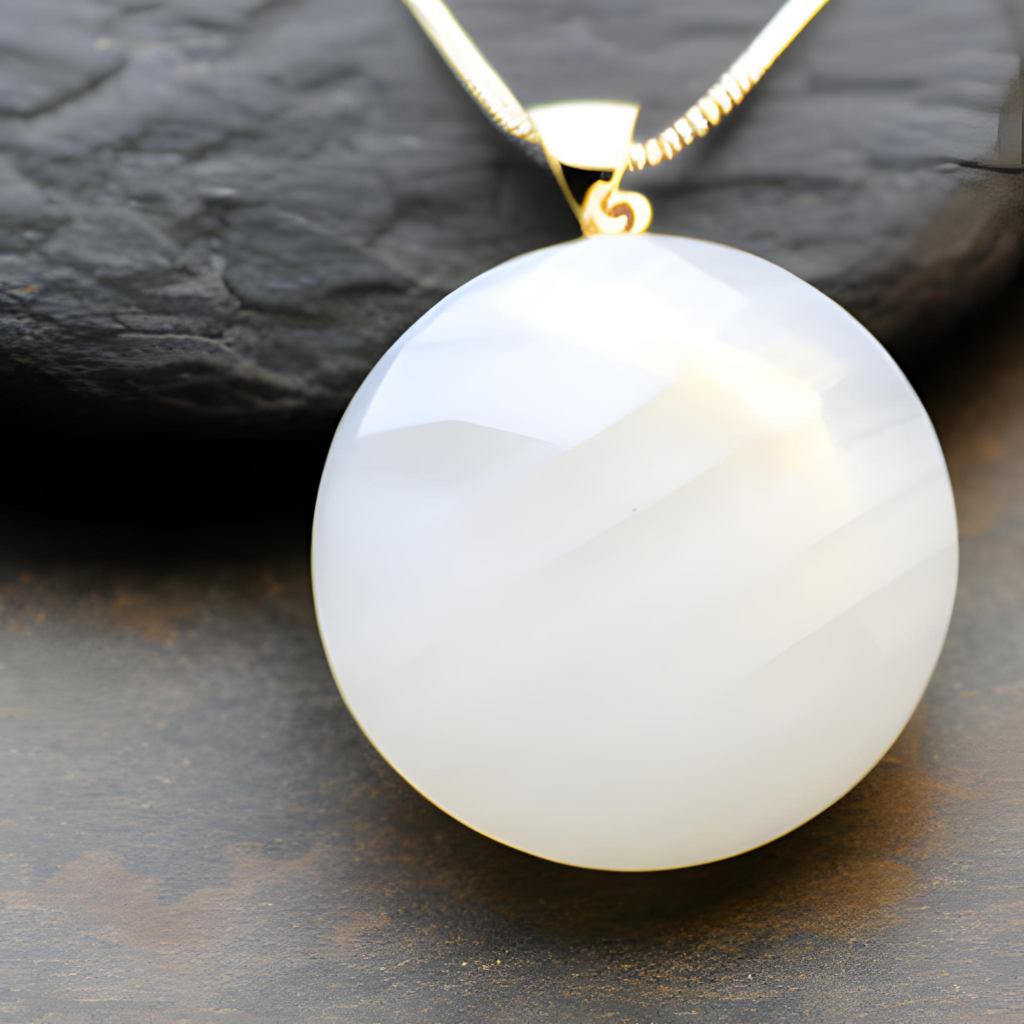
Uses of Selenite Gemstone
Selenite gemstones have many uses due to their unique properties and energetic qualities. Here are some common ways in which the gem is utilized:
Spiritual and Energy Work: Selenite Gemstone is highly regarded in spiritual and energy practices. It is often used in meditation, energy healing, and chakra balancing. Selenite Gemstone wands or palm stones can be held or placed on the body to promote energetic cleansing, balance, and alignment. Its purifying properties are believed to remove negative energy, blockages, and stagnant energy from the aura and chakras.
Cleansing and Charging Other Crystals: Selenite Gemstone is known for its ability to cleanse and recharge other crystals. It is often used to purify and revitalize gemstones and minerals. Placing other crystals on a selenite gemstone charging plate or keeping them close to the Selenite Gemstone can help clear their energy and restore their vibrancy.
Creating Sacred Spaces: Selenite Gemstone is valued for its ability to create a harmonious and energetically clear environment. It is commonly used in spiritual and healing spaces to purify and uplift energy. Selenite wands or clusters are placed in rooms, altars, or meditation spaces to promote a peaceful and sacred atmosphere.
Decorative and Aesthetic Purposes: The gem’s elegant and ethereal appearance makes it a popular choice for decorative purposes. Lamps, candle holders, and other home decor items are sought for their aesthetic beauty and soft, diffused light. These pieces create a serene and soothing ambiance in living spaces.
Metaphysical Support: Selenite Gemstone is believed to offer various metaphysical benefits. It often relieves stress, promotes mental clarity, and aids meditation practices. Selenite is also thought to enhance intuition, psychic abilities, and spiritual growth. Some individuals use this stone for dream work, enhancing dream recall and accessing higher realms of consciousness during sleep.
Jewelry and Personal Accessories: Selenite gemstones are occasionally used in jewelry, such as pendants, earrings, or bracelets. These pieces showcase the gemstone’s beauty and allow the wearer to benefit from its energetic properties throughout the day.
Is Selenite Gemstone a birthstone?
Most birthstone systems do not recognize it as a traditional birthstone. Birthstones are typically assigned to specific months and have historical and cultural significance. The American Gem Society (AGS) and the Jewelers of America (JA) recognize the most widely accepted birthstone system. According to this system, the stone is not listed as a birthstone for any particular month.
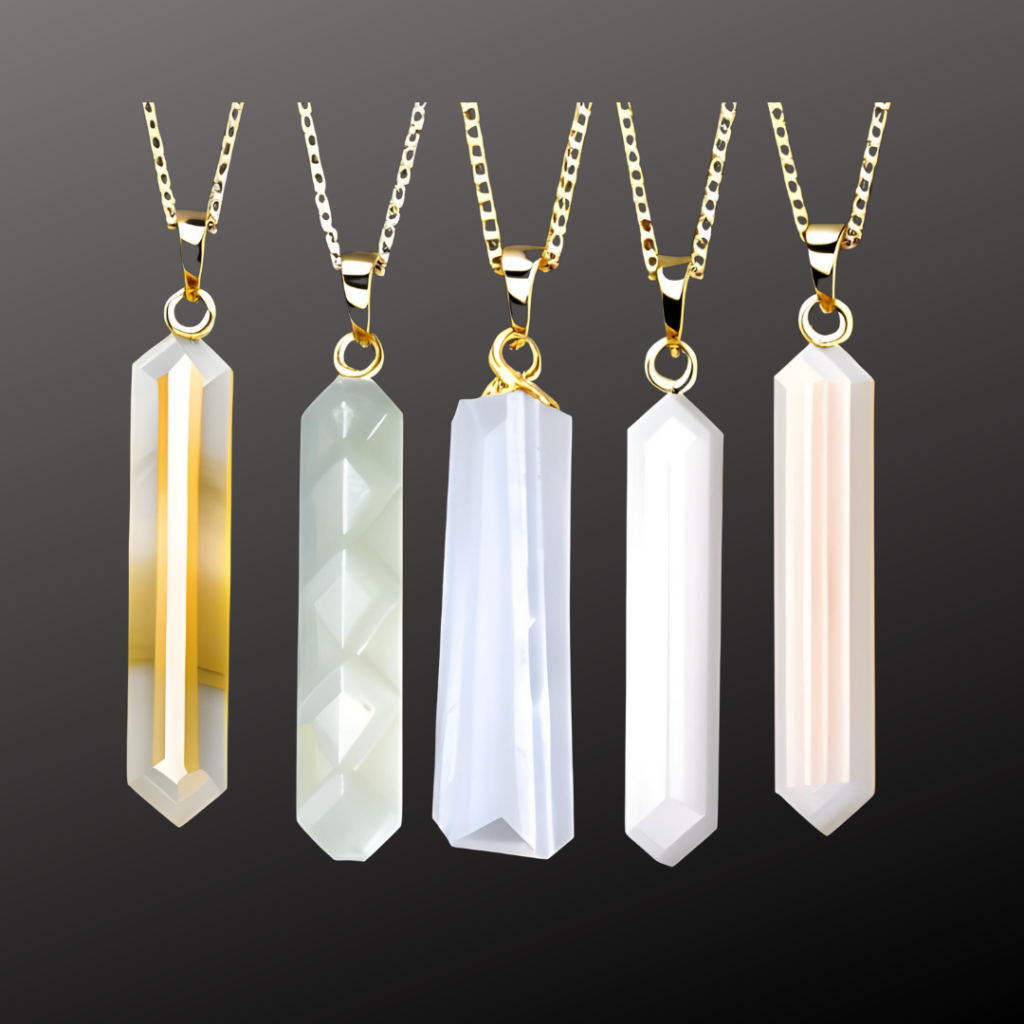
Selenite Gemstone Jewelry
How To Take Care Of Selenite Jewelry?
Properly caring for your jewelry is essential to maintain its beauty and longevity. Here are some guidelines to help you care for your Selenite Gemstone jewelry:
- Handle with Care: Since it is a relatively soft mineral, it is important to handle your jewelry with care to avoid scratches, chips, or breakage. Avoid dropping or knocking your jewelry against hard surfaces.
- Store Separately: When not wearing your Selenite Gemstone jewelry, store it separately from other jewelry to prevent scratching or damage. You can use a soft pouch or individual compartments in a jewelry box to protect each jewelry piece.
- Avoid Exposure to Water: The gem is a hydrous calcium sulfate mineral, which means it can be damaged by prolonged exposure to water or moisture. Avoid wearing selenite jewelry when swimming, bathing, or engaging in activities where it may come into contact with water. Moisture can cause Selenite to become dull or even dissolve over time.
- Keep Away from Chemicals: Selenite gemstones can be sensitive to harsh chemicals, including household cleaning agents, perfumes, hairsprays, and cosmetics. Remove your selenite jewelry before applying these substances to prevent any potential damage or discoloration.
- Clean Gently: Selenite Gemstone jewelry can be cleaned using a soft, lint-free cloth to remove any dirt or oils that may accumulate over time. Avoid using harsh cleansers or abrasive materials that can scratch or damage the stone’s surface.
- Recharge and Clear Energy: Selenite Gemstone is known for absorbing and dispelling negative energy. To rejuvenate the energetic properties of your selenite jewelry, you can place it on a Selenite charging plate or near a larger selenite crystal for a few hours. This helps to clear any absorbed energies and restore their energetic vitality.
Frequently Asked Questions (FAQs)
What makes Selenite Gemstone Unique?
Selenite gemstone is unique because of its natural translucent and soft white appearance, which resembles a moonbeam. It is a type of gypsum mineral that is commonly found in caves and other sedimentary rock formations. Selenite is believed to have healing properties and is often used in meditation practices to promote clarity and calmness.
It is also a very fragile gemstone, and it can be easily scratched or broken. Despite its delicate nature, selenite has a strong energy field that can help balance emotions and promote spiritual growth. Its unique physical and metaphysical properties make it a popular gemstone for both collectors and spiritual practitioners.
Are there any healing benefits to using Selenite Gemstone in alternative medicine?
Selenite gemstone is believed to have healing benefits in alternative medicine. It is said to have a soothing effect on the body, mind, and spirit, and can help to clear negative energy and promote mental clarity.
Selenite is also said to help with physical ailments such as back pain, arthritis, and skin disorders. It is often used in meditation and energy healing practices, and is believed to help balance the chakras and promote inner peace. While there is no scientific evidence to support these claims, many people find selenite to be a helpful tool in their holistic health practices.often used to deepen meditation, promote spiritual insight, and facilitate spiritual experiences.
What is the spiritual Meaning of Selenite Gemstone?
Selenite is believed to have strong spiritual properties and is often associated with the crown chakra, which is the highest and most spiritual chakra in the human body. It is believed to promote mental clarity, inner peace, and spiritual growth.
The gemstone is also said to assist in communication with angels and other spiritual beings, and to enhance intuition and psychic abilities. Selenite is often used in meditation, as it is believed to have a calming effect on the mind and body, and to help release negative energy and emotions. Additionally, the gemstone is said to promote physical healing, particularly in the areas of the spine and nervous system.
Can Selenite Gemstone be used in an engagement ring?
Selenite is generally not recommended as an engagement ring due to its softness and fragility. Engagement rings are typically worn daily and subjected to regular wear and tear, which could easily damage a selenite gemstone.
Furthermore, Selenite is soluble in water, and prolonged exposure to moisture can cause it to dissolve or disintegrate. Engagement rings are often exposed to water during activities such as washing hands, showering, or swimming, making them unsuitable for a gemstone as delicate as Selenite.
Choosing a durable gemstone that can withstand daily wear, such as diamonds, quartz, sapphires, or rubies, is generally advisable for an engagement ring. These gemstones have a higher hardness and are better suited for the rigors of everyday use.


